- Home
- Technical Cooperation Projects
- Index of Countries
- Asia
- Viet Nam
- Support for Planning and Implementation of the Nationally Determined Contributions in Vietnam (SPI-NDC)
- Project News
- Sector-Specific Private Companies Technical Training toward GHG emissions calculation and Reduction plan formulation (Cement Sector)
Project News
2022-12-15
Sector-Specific Private Companies Technical Training toward GHG emissions calculation and Reduction plan formulation (Cement Sector)
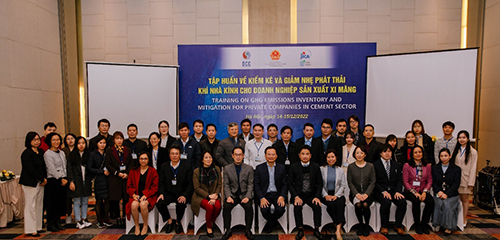
Under the revised Environmental Protection Law that came into force in 2021, "Government Decree GHG Emission Reduction, Carbon Market and Ozone Protection (06/2022/NĐ-CP)" (hereinafter referred to as Decree No. 6) stipulates business establishments (facilities) above designated threshold of GHG emissions/energy consumptions are required to calculate their own GHG emissions and report them to the government. In addition, the relevant facilities are required to understand their own emissions and formulate GHG emission reduction plans for each facility, and they are expected to participate in the domestic emissions trading market, which will be established in the future based on this law.
The SPI-NDC project held private company training for the cement sector on December 14th and 15th, 2022 in Hanoi.
From the perspective of supporting the implementation of NDC based on the implementation of domestic laws formulated by the government, under Vietnam's Ministry of Natural Resources and Environment (MONRE)- the Vietnam Chamber of Commerce and Industry (VCCI), public-private partnership framework, this project has held a private company dialogue in June 2022[1], and conducted mutual learning for CEO/company managers in October 2022[2] , respectively. This training was positioned as the next step for industry-specific practitioners and was designed with the aim of covering GHG emissions calculation, reduction plan formulation, and emissions trading market in response to Decree No. 6.
While companies are legally required to comply with GHG calculation reporting and mitigation plan requirements, this training was designed as a practice-based training that responds to the needs of "HOW TO actually do it". Approximately 100 participants, including participants from private companies, participated both face-to-face and online.
Notes
First day (December 14th)
Three sessions were held after greetings from co-organizers of Vietnam's Ministry of Natural Resources and Environment (MONRE), Vietnam's Ministry of Construction (MOC), and SPI-NDC project.
| Session 1 |
|
|---|---|
| Group exercise 1 |
|
| Group exercise 2 |
|
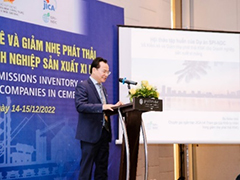 Mr. Pham Van Tan MONRE/DCC Deputy Director
Mr. Pham Van Tan MONRE/DCC Deputy Director
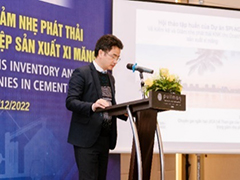 Mr. Vu Ngoc Anh MOC Deputy Director General
Mr. Vu Ngoc Anh MOC Deputy Director General
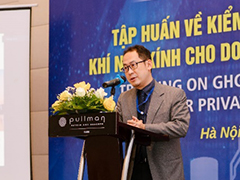 Mr. Koji Fukuda SPI-NDC Project Expert /Chief Advisor
Mr. Koji Fukuda SPI-NDC Project Expert /Chief Advisor
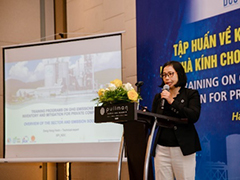 Ms. Dang Hong Hanh, National Expert/Moderator VNEEC
Ms. Dang Hong Hanh, National Expert/Moderator VNEEC
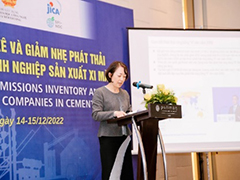 Ms. Akiko Ishii, SPI-NDC Expert, introducing the training background
Ms. Akiko Ishii, SPI-NDC Expert, introducing the training background
 Mr. Nguyen Tien Hai, National expert giving lectures and exercises/VNEEC
Mr. Nguyen Tien Hai, National expert giving lectures and exercises/VNEEC
Second day (December 15th)
The content was further advanced, with lectures and exercises on the emissions trading system, an introduction to the online GHG calculation reporting system demo version for business facilities under Decree No. 6, and sessions on resource recycling and climate change were conducted. In particular, in the circular economy session, the concept and international trends, as well as the efforts of the UNDP Circular Economy Hub for the Vietnam circular economy were introduced. In the exercise, a group discussion was held assuming the formulation of a sector resource circulation plan.
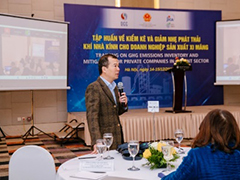 Mr. Luong Quang Huy, MONRE DCC Director, introducing legal requirements
Mr. Luong Quang Huy, MONRE DCC Director, introducing legal requirements
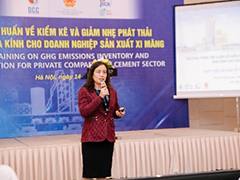 Ms. Tang Hong Loan, National expert, EPRO
Ms. Tang Hong Loan, National expert, EPRO
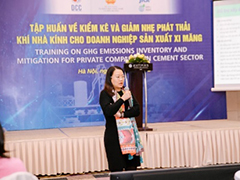 Ms. Hoang Dieu Linh, UNDP Circular Economy Hub
Ms. Hoang Dieu Linh, UNDP Circular Economy Hub
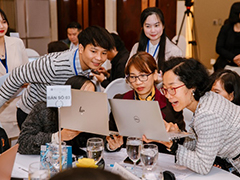 Discussion during the exercise session
Discussion during the exercise session
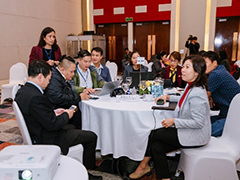 Discussion during the exercise session
Discussion during the exercise session
In this training, discussion format with all participants was adopted in the exercises, and as a result of active discussions, participants' understanding of the training content was enhanced. In addition, not only participants at the training site but also most of the online participants continued to participate throughout the two days of training, indicating a high level of interest in the training content. We expect that this training will serve as a catalyst for further efforts in the cement sector to address climate change.
- About JICA
- News & Features
- Countries & Regions
- Our Work
- Thematic Issues
- Types of Assistance
- Partnerships with Other Development Partners
- Climate Change / Environmental and Social Considerations
- Evaluations
- Compliance and Anti-corruption
- Science and Technology Cooperation on Global Issues
- Research
- JICA Development Studies Program / JICA Chair
- Support for the Acceptance of Foreign HRs / Multicultural and Inclusive Community
- Publications
- Investor Relations
